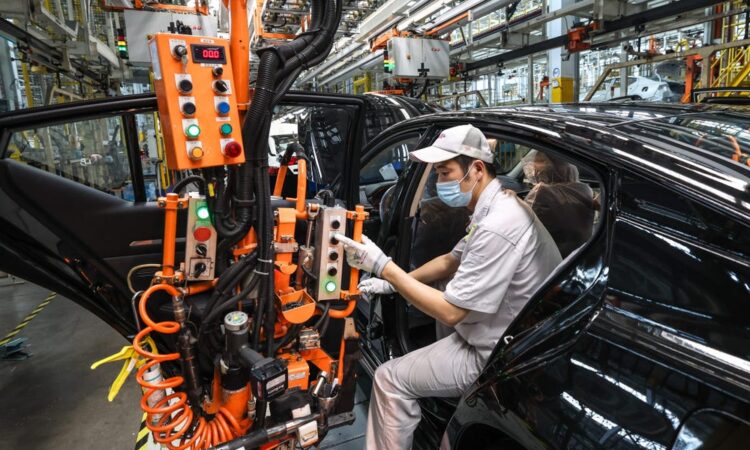
- China’s attempts to revive its economy could push US inflation higher, new research says.
- To stimulate its economy, China policymakers are encouraging investments in the manufacturing sector.
- A manufacturing boom would create “meaningful upward pressure” on US inflation.
Chinese policymakers are trying to kindle more activity in their manufacturing sector in an effort to revive a slumping economy, and that could create new problems for the US inflation outlook if the measures are successful.
A period of manufacturing-led growth would create a short-term “sugar high,” a report from the New York Federal Reserve said.
“A key finding is that such a boom would put meaningful upward pressure on U.S. inflation,” the report said.
In the past few years, China has seen a notable redistribution of credit across its economy, with bank lending steadily shifting away from the property sector and into manufacturing. There has also been big growth in new “green loans,” the report found, as China’s clean energy sector takes off.
According to estimates, new manufacturing lending in China likely accounted for a third of total lending in 2023, the report said.
If those investments pay off, and the country sees a scenario where credit growth rises to 12% over the next two years from the 9.5% it sits at today, it would hit prices in the US, the NY Fed report said.
“Our exercise shows that the materialization of this upside scenario could generate persistently higher inflation in the U.S. over the next two years,” the report said. “This implication owes to the importance of the Chinese economy in global manufacturing.”
In other words, as China sees growing demand from a manufacturing boom, the cost of the goods rises for producers, which eventually trickles down to the consumer.
“This finding is at odds with the apparent conventional wisdom, which holds that a manufacturing-led expansion in China would be disinflationary for the US,” researchers said. “This reasoning ignores the pressures that increased Chinese production would place on global commodity markets and the broader manufacturing supply chain.”






